MUST SEE: LAUREL FOREST IN SAO VICENTE, MADEIRA 🇵🇹 PORTUGAL
MUST SEE: LAUREL FOREST IN SAO VICENTE,
MADEIRA 🇵🇹 PORTUGAL
 Portugal's Madeira Island is an island in the Atlantic off the coast of Africa. Madeira itself is a sight to behold. The volcanic island erupted in the Ocean during the Miocene Epoch about twenty million years ago. After the lava cooled and erosion shaped the island.
Portugal's Madeira Island is an island in the Atlantic off the coast of Africa. Madeira itself is a sight to behold. The volcanic island erupted in the Ocean during the Miocene Epoch about twenty million years ago. After the lava cooled and erosion shaped the island.
The highest point on the island stands at 1,862 metres (6,109 feet) and the distance to Madeira’s submerged base at the bottom of the Atlantic is just over 6,000 metres (about 20,000 feet).

The spectacular landscape of the Laurisilva Forest is a strongly scented, integral part of Madeira Island's landscape. Its lush vegetation hides the fascinating indigenous laurel forest, recognized by UNESCO in 1999 as Natural Heritage of Humanity. The Laurisilva of Madeira is an outstanding relic of a previously widespread laurel forest type. Historians believe that forty million years ago up until the last Ice Age there were great swaths of Laurisilva forest covering much of southern Europe. However, today this ecosystem is mostly confined to the three Atlantic archipelagos of Madeira, Azores, and the Canaries.

The Laurisilva Forest of Madeira is the largest surviving area of laurel forest and is believed to be 90% primary forest meaning the trees in this forest have never been cut down. This forest area dates back to the dinosaurs and has somehow survived almost six hundred years of human habitation. The forest contains a unique suite of plants and animals, including many endemic species such as the Madeiran long-toed pigeon. Madeira is … World Heritage
The Laurisilva Forest is not only a UNESCO site preserved for it's unique beauty and as an example of primary forest; this forest is also it is a precious mass of fertile forest that plays an increasingly important role in maintaining the island’s hydrological balance and biological diversity.
The Laurisilva Forest of Madeira has long played and important role to the islanders. Much of the forest is criss-crossed by a network of irrigation channels known as Ievadas which carry water from the fertile north to the more arid regions on the south side of the island.
Laboriously cut from the sturdy mountain rock to transport water to the island’s plantations and hydro-electric power stations, the levadas date right back to the island’s very first settlers in the early 15th century.
Today, the the levadas still play an essential role in the cultivation of a variety of crops, including bananas, grapes (used for making Madeira wine), sugar cane and passion fruit, that grow in abundance all over the island.

Interested in learning more of the history of this special place, click this link:
https://viajealpatrimonio.com/listing/laurisilva-de-madeira/
MUST SEE: SAMOA 🇼🇸 APIA
SAMOA 🇼🇸 APIA
Samoa
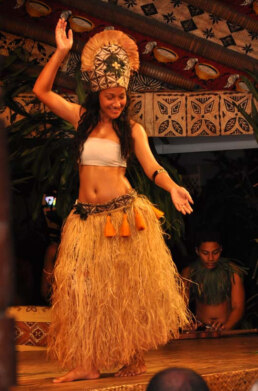
Samoan dances in Apia 🇼🇸 Samoa Samoan cultural dancing is a vibrant and integral part of Samoan heritage, particularly in Apia, the capital city of Samoa. Traditional dances in Samoa are deeply rooted in the cultural and social fabric of the island, reflecting its history, values, and communal lifestyle. One of the most prominent dances is the Siva. This graceful dance, often performed by young women, tells stories through slow, fluid movements, symbolizing the beauty and harmony of Samoan life. The Fa’ataupati, or slap dance, contrasts with its energetic and rhythmic style, typically performed by men, showcasing strength and coordination
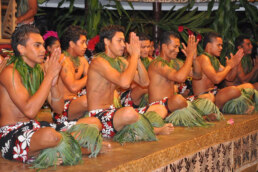
The Fa’ataupati, or slap dance, contrasts with its energetic and rhythmic style, typically performed by men, showcasing strength and coordination.
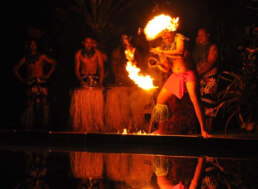
Fire Dancer The ancient art of fire (sword) dancing originated in Polynesia. Taking his inspiration from the Samoan warrior, a fire knife dancer takes center stage twirling, tossing, catching and throwing a flaming machete at high speeds. The history of Samoan fire twirling, or fire knife dancing, is rich and fascinating. The practice, known as Siva Afi or Ailao Afi, originated from the traditional Samoan knife dance called Ailao, which was performed by warriors to demonstrate their battle prowess and psych themselves up before combat. The dance involved twirling and tossing a war club called a nifo oti, which was later adapted to include fire (Wikipedia) (Old Lāhainā Lū’au). The incorporation of fire into the dance is credited to Uluao “Freddie” Letuli, a Samoan-American performer. In 1946, inspired by a Hindu fire eater and a baton twirler with lighted batons he saw at a Shriners Convention in San Francisco, Letuli decided to add fire to his knife dance routine. This innovation dramatically increased the skill and danger involved, making the dance even more captivating. Letuli’s new version of the dance quickly gained popularity and became a staple in Polynesian shows and luaus (Maui Luau Review) (Discover Hawaii). Fire knife dancing has since become a celebrated part of Samoan culture and is showcased in various cultural events, including the annual World Fire Knife Dance Competition held at the Polynesian Cultural Center in Hawaii. This competition attracts performers from around the world and highlights the skill, strength, and artistry involved in this dynamic dance (Aloha Hawaii). For a deeper dive into the history and cultural significance of Samoan fire twirling, you can explore resources such as “Flaming Sword of Samoa” by Letuli, which provides an in-depth look at the origins and evolution of this mesmerizing dance (Aloha Hawaii) (Discover Hawaii).[/caption]
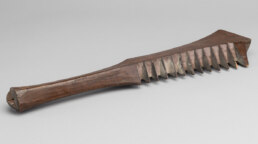
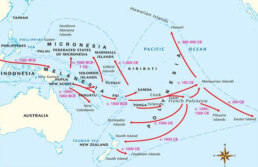
A theory on Human migration from Indonesia into Micronesia, Melanesia and Polynesia. Samoa is a sovereign nation 40 miles northwest of American Samoa, a US Territory. While geographically quite close, Samoa and American Samoa are separated by 24 time difference. Samoa being more closely connected with Australia and New Zealand as primary trade partners and American Samoa with the United States. Samoa consists of the islands of Upolu, Savai’i, Apolima and Manono. During Colonial times these islands were a German protectorate from 1900 until the takeover by New Zealand forces during World War 1 in 1914. The takeover of Samoa was New Zealand’s first military action in World War I. In late August 1914 with landings by the Samoa Expeditionary Force from New Zealand on behalf of King George V. Samoan independence came in 1962.




